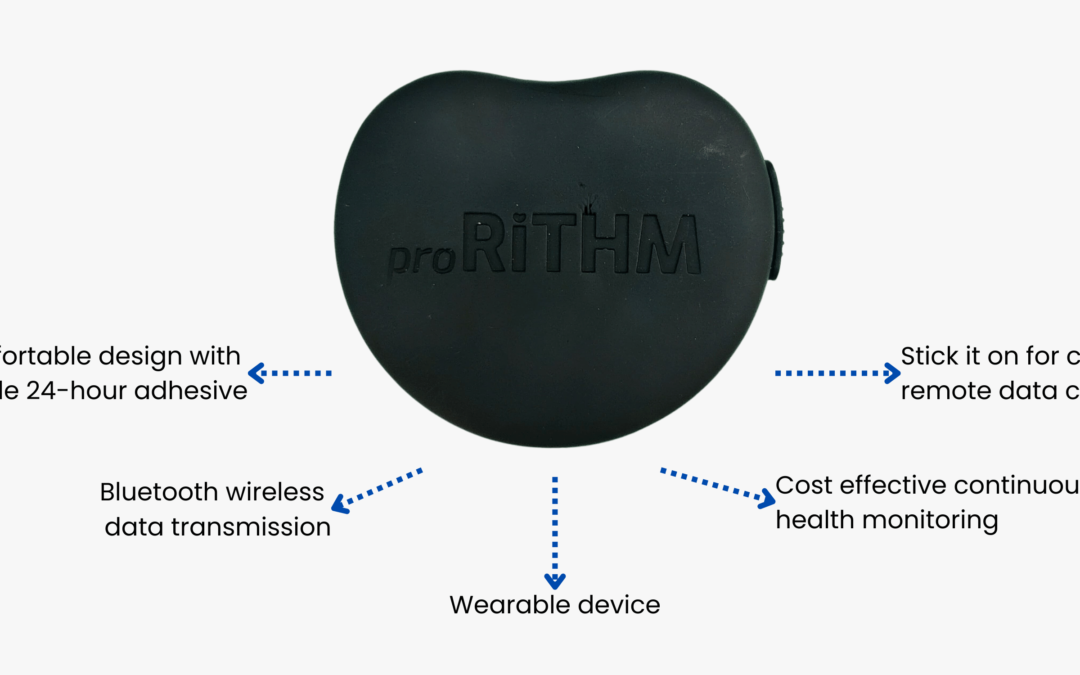Chronic heart conditions, such as hypertension, heart failure, arrhythmias, and coronary artery disease, affect millions of people worldwide, often requiring continuous monitoring to prevent complications such as heart attacks and strokes. Cardiovascular monitoring plays a crucial role in tracking heart health, detecting abnormalities early, and ensuring effective disease management. With advancements in medical technology, patients now have access to various monitoring tools—ranging from wearable devices to remote patient monitoring systems—that help doctors make informed treatment decisions. In this blog, we’ll explore how cardiovascular monitoring aids in managing chronic heart conditions. But first, let’s understand the basics.
What is a Cardiac Monitor?
A cardiac monitor is a medical device used to track heart activity, including heart rate, rhythm, and electrical patterns. It helps detect irregularities such as arrhythmias, ischemic changes, and other cardiac conditions, allowing for timely medical intervention.
Cardiac monitors range from simple wearable devices that track heart rate to advanced clinical monitors used in hospitals for continuous ECG (electrocardiogram) monitoring. These devices provide valuable data that help healthcare professionals assess heart function, adjust medications, and prevent complications in patients with chronic heart conditions.
Types of Cardiac Monitors:
Cardiac monitors come in different forms, each serving a unique purpose in tracking heart health.
- Continuous Monitoring Device is a portable device that continuously records heart activity for 24 to 48 hours, capturing irregularities that may not be detected in a standard ECG.
- Event Monitor
A wearable device used for several days or weeks, recording heart activity only when activated by the patient during symptoms. - Continuous Remote Cardiac Monitor
A real-time monitoring system that transmits heart activity data to healthcare providers, allowing for immediate analysis and intervention. - Loop Memory Monitor
A continuous ECG device with chest electrodes that records but does not save heart activity until activated by the patient or automatically during abnormal rhythms. It captures data before, during, and after symptoms for accurate diagnosis. - Implantable Loop Recorder (ILR)
A small device implanted under the skin that monitors heart rhythms for months or years, useful for detecting unexplained fainting or irregular heartbeats. - Smart Wearable ECG Devices
Modern smartwatches and fitness trackers equipped with ECG capabilities that provide convenient, real-time heart monitoring.
Purpose of Cardiac Monitor in Managing Chronic Heart Conditions
Cardiac monitors play a vital role in managing chronic heart conditions by continuously tracking heart activity and providing essential data for effective treatment. Since symptoms like abnormal heart rhythms may not always appear during a routine consultation, ongoing monitoring helps ensure timely medical intervention and personalised care: - Detecting Irregular Heart Rhythms (Arrhythmias)
Chronic heart conditions often involve arrhythmias such as atrial fibrillation, bradycardia, and tachycardia. The function of cardiac monitors is to help identify these persistent irregularities, allowing doctors to adjust treatments accordingly. - Assessing Heart Function Over Time
For patients with conditions like heart failure and coronary artery disease, continuous monitoring provides insights into heart function trends, enabling early detection of worsening symptoms and necessary adjustments in treatment. - Monitoring Symptoms Related to Chronic Conditions
Patients with long-term heart conditions may experience symptoms like dizziness, palpitations, or chest discomfort. Cardiac monitors help correlate these symptoms with heart activity, assisting doctors in refining treatment plans. - Optimising Medication and Lifestyle Adjustments
By providing real-time and long-term heart data, cardiac monitors assist in adjusting medications, identifying triggers, and recommending lifestyle modifications to better manage chronic heart conditions. - Reducing Hospital Visits and Emergency Risks
Remote and continuous monitoring allows healthcare providers to detect concerning changes early, reducing unnecessary hospitalisations and enabling proactive management of chronic heart diseases.
There are several benefits of cardiovascular monitoring for managing chronic health conditions:
- Tracking Silent or Sporadic Arrhythmias: Detects intermittent issues like atrial fibrillation or bradycardia, which may not be present during routine check-ups but are critical for chronic condition management.
- Enhancing Diagnosis and Treatment Accuracy: Continuous or event-based monitoring provides comprehensive ECG data, helping doctors make informed decisions and refine long-term treatment strategies.
- Enabling Real-Time Response to Changes: Remote and continuous monitoring alerts healthcare providers to abnormal heart activity, ensuring timely interventions and reducing emergency risks.
- Optimising Long-Term Treatment Plans: Provides valuable insights for adjusting medications, recommending lifestyle modifications, and planning interventions such as pacemakers for better chronic disease management.
- Empowering Patients in Self-Care: Wearable ECG devices allow patients to actively monitor their heart health, encouraging adherence to treatment plans and healthier lifestyle choices.
- Minimising Hospitalisations and Complications: Remote monitoring reduces unnecessary hospital visits by allowing doctors to track heart health trends from a distance, leading to proactive care and better disease management.
- The process of cardiac monitoring varies depending on the type of monitor used. However, the general procedure involves preparation, monitoring, and data analysis.

